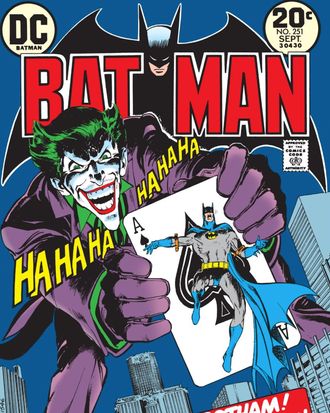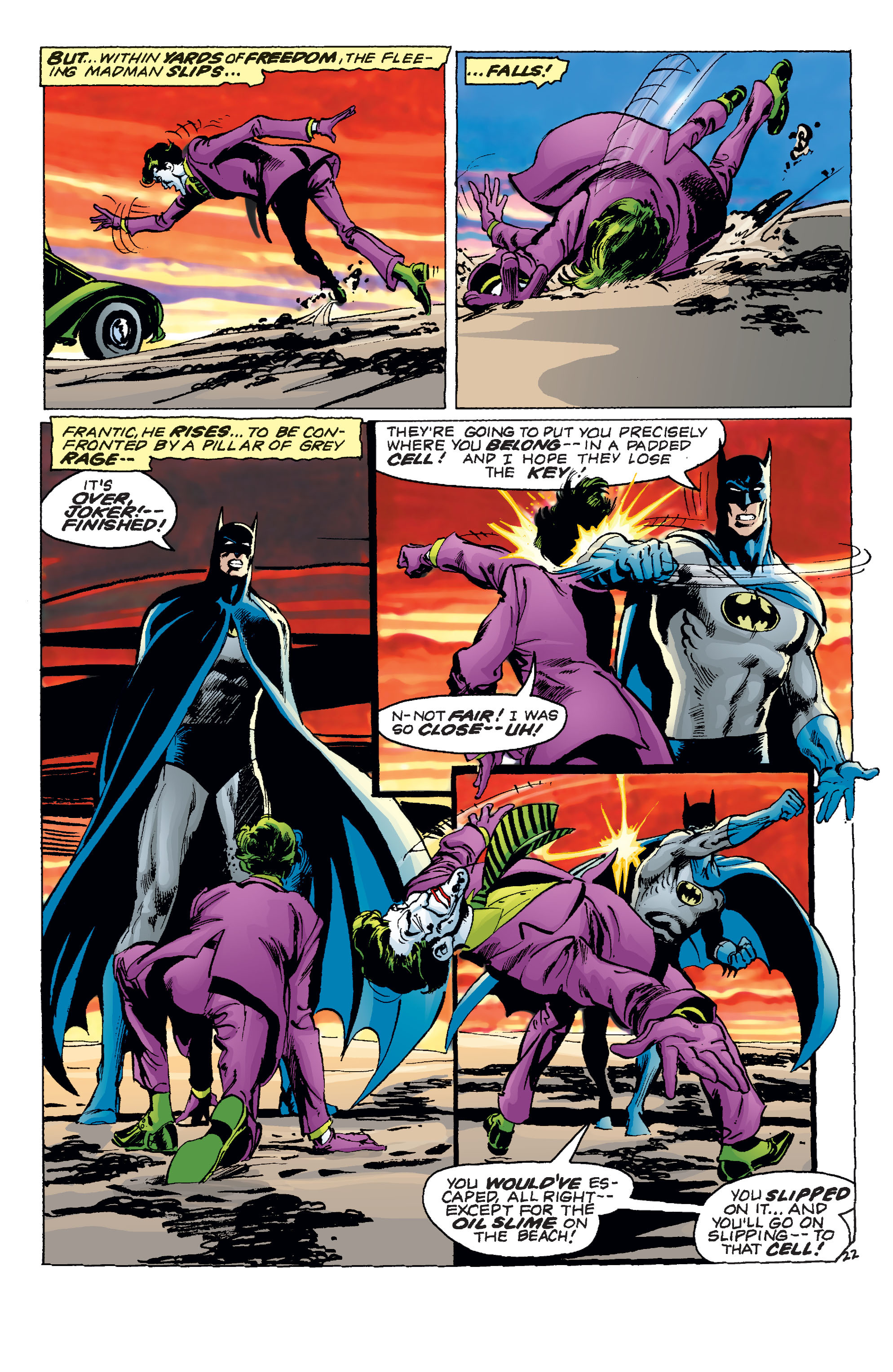Last year saw the passing of acclaimed comic book writer Denny O'Neill. O'Neill had a long history with many DC Comics superheroes as a writer and editor and is best known for revitalizing the character of Batman among others starting in the 1970s. I decided to pick up a copy of one of the more famous Batman issues of this era, Joker's Five Way Revenge which was written by O'Neill and drawn by Neal Adams. The story featured in Batman # 251, was released in November, 1973. While I am gaining a better appreciation for 1990s comics, I largely avoided avidly reading 1970s issues due to their seemingly dated nature and tropes. After reading this issue, I had some thoughts on both how the character and mythos of Batman has evolved over time and a greater appreciation for a more grounded Dark Knight.
In Joker's Five Way Revenge, the Joker is seeking revenge for a presumed betrayal by killing members of his former gang and Batman is striving to stop him. By the time the issue opens, the Clown Prince of Crime has already taken his first victim, and following a brief scene with Commissioner Gordon, Batman tries to save the nearest henchman former boxer Packy White. Unfortunately Packy drinks Joker poisoned water while in Batman's custody and dies with a chilling grin on his face. From there, the Joker murders his remaining associates one by one in increasingly violent ways with the Dark Knight in hot pursuit.
In Joker's Five Way Revenge, the Joker is seeking revenge for a presumed betrayal by killing members of his former gang and Batman is striving to stop him. By the time the issue opens, the Clown Prince of Crime has already taken his first victim, and following a brief scene with Commissioner Gordon, Batman tries to save the nearest henchman former boxer Packy White. Unfortunately Packy drinks Joker poisoned water while in Batman's custody and dies with a chilling grin on his face. From there, the Joker murders his remaining associates one by one in increasingly violent ways with the Dark Knight in hot pursuit.
O'Neill's Batman presented as more human in both the physical and social sense as compared to the modern Dark Knight penned by Tom King or Scott Snyder. Batman is portrayed as in peak human condition but these limits are often pushed to superhuman levels of strength and endurance. Books such as Justice League stretches the abilities of this 'normal' man in order to keep up with his superhuman companions and this power creep long since has spread to the Caped Crusader's main books. In Joker's Five Way Revenge, Batman here depicted as capable & intelligent and remains quite fallible, being knocked out twice, once by a mere common criminal and the Joker himself. In lieu of an assortment of gadgets and weaponry, Batman is forced to use his wits. At the comic's climax, Batman is trapped in a shark tank and escapes not by using any Bat-gadgets but a metal chair. Ultimately it isn't the actions of the Batman that leads the Joker's capture. The clown near steps from freedom, slips on a oil slick.
Post Frank Miller's Dark Knight Returns, Batman morphed into an anti-social, abusive, brooding caricature of himself. However, Bruce Wayne has not always been depicted as so cold and emotionally bereft. O'Neill writes the character as mysterious but caring when the situation calls for it. In this comic, Batman's relationship with Commissioner Gordon is much more amicable and respectful than modern Batman. While historically there is mutual respect and trust between the two men, much of this relationship is shown through non-verbal cues. In Joker's Five Way Revenge, Batman addresses the elder Gordon as sir, acknowledging Gordon's official rank as a police commissioner and senior in age. Across most media, Jim Gordon is often depicted as the only good cop and a pillar of virtue in Batman's eyes so perhaps this greater level of courtesy reflects this. In addition, he trusts former Joker henchman Bigger Melvin to the extent that drops his guard and allows the crook to return to his apartment to retrieve personal items prior to entering police protection. The crook ultimately tricks and attacks our hero and is later becomes the Joker's next victim. This personality shift is not limited to just the Dark Knight.
The Joker seen here is far from Cesar Romero's campy clown portrayed by and resumes his long forgotten murderous ways. The bright and florescent Silver Age capers that flowed from the pen Dick Sprang have been wiped away. This issue depicts the Joker killing four of his henchman and nearly a fifth in increasingly brutal ways. The transition from 1960s camp to 1970s brutality is illustrated in this story when the Joker confronts his former henchmen over an alleged betrayal. Never is it proven that the Joker was actually betrayed by any of these men. One of the henchman views the Joker as almost an old friend when receiving a cigar as a gift. He reminisces with the clown over past capers and his use of gag exploding cigars. This trust is fatally betrayed when the henchman is killed in a massive explosion caused by the Joker's 'gift' also that destroys much of the apartment building.
Batman is a character that has evolved and changed many times since his introduction in Detective Comics # 27. Even in modern comics, he plays roles such as team leader, mentor, friend, and father. While the Batman shown in this story differs in many ways from the Batman seen today but throughout the decades remains a character that strives to preserve life, even the lives of criminals that worked with someone as detestable as the Joker. Without the hard work and talent of Denny O'Neill, the Dark Knight would not be the character and icon he is today and comic books fans and American pop culture itself would certainly poorer for it. Joker's Five Way Revenge is a classic story that should not be missed by any fans of the Batman and the Joker and anyone who wants to honor the memory of a comic book legend.


Comments
Post a Comment